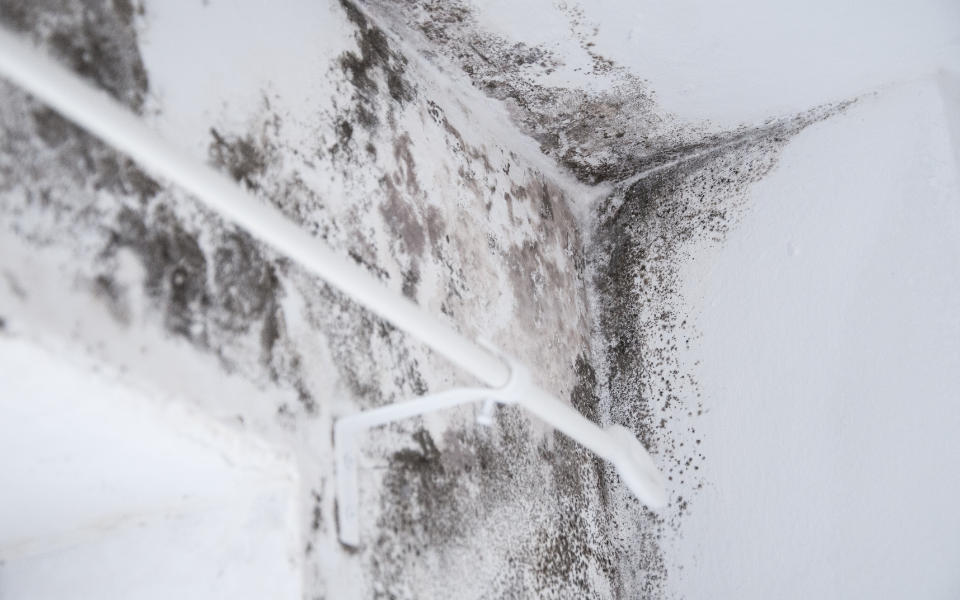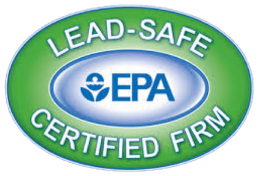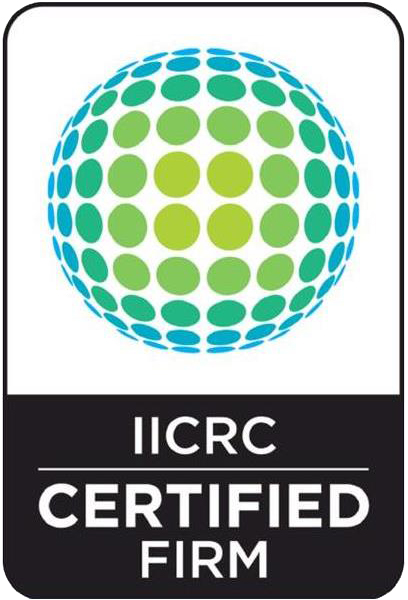Mold can be a serious problem in any home. Even small amounts of mold can cause health issues for some people. Unfortunately, mold is not always easy to spot. There are often hidden signs of mold growth that homeowners overlook. Being able to recognize these subtle clues is key to finding and eliminating mold before it becomes a big issue. Before you hire the right restoration company, knowing the signs first could surely help.
Table of Contents
Risks of Mold
Mold exposure poses several potential risks, especially for sensitive individuals. The most common health issues caused by indoor mold growth include:
- Allergic reactions – Mold spores can cause runny nose, eye irritation, coughing, sneezing, skin rashes, and other allergy symptoms.
- Asthma – Mold is an asthma trigger that can instigate wheezing, chest tightness, and asthma attacks.
- Respiratory problems – Sinus congestion, sore throat, and shortness of breath are common mold exposure symptoms.
- Immune system problems – Exposure over time may impact immune function and make people more prone to illness.
- Headaches and fatigue – Inhaling mold often causes headaches, dizziness, and tiredness.
Mold damage in the home can also lead to extensive structural issues over time. Prolonged moisture and mold growth degrades building materials like wood, drywall, and insulation. Left unchecked, mold infestations can become costly to remediate. Acting quickly to identify and address hidden mold minimizes health risks and property damage.
Let’s cover 10 hidden signs of mold and how to track down the source of invisible mold infestations.
10 Hidden Signs of Mold in a Home
Here are 10 sneaky signs that mold may be growing inside your home:
1. Musty Odor
A musty, earthy smell is one of the most common indicators of a mold problem. The human nose is highly sensitive to the smell released by mold spores and hyphae. Even small amounts of hidden mold growth can produce a noticeable musty odor. Pay close attention to areas that smell damp or like wet soil. This is a sign moisture has accumulated and could be feeding mold growth.
2. Ductwork Condensation
Finding condensation or damp spots on ductwork is a sign of excess moisture in the indoor air. As warm, humid air circulates through the ducts, the moisture condenses on the cool surface of the ducts. This damp environment is ideal for mold growth on and inside the ducts. Condensation on ducts points to high indoor humidity that must be addressed.
3. Dark Tile Grout
If the grout lines between bathroom and kitchen tiles appear darker than the surrounding tiles, this may indicate mold growth. Mold and mildew can take hold in of porous grout and discolor it from white or light gray to black or dark gray. Pay close attention to joints, edges, and where the grout meets the tub. Dark grout doesn’t necessarily mean there is mold present but it is a symptom worth investigating.
4. Peeling Wallpaper
Curling, peeling wallpaper can happen for various reasons. However, if there are water stains or patches of mold visible underneath, hidden moisture in the walls is likely to blame. Mold growing behind wallpaper will cause the adhesive to fail. Bubbling or warped areas under wallpaper are also a sign of moisture issues that require further exploration behind the walls.
5. Warping Wood
Wood that composes framing, floors, bookshelves, cabinets, and other home components can warp, swell, or bubble when exposed to excess moisture. If the wood in your home looks deformed, peeled, or curled, search the surrounding area carefully for signs of mold growth. Swollen or spongy floorboards may happen gradually over time so compare boards side-by-side to identify slight differences.
6. Cracking Drywall
Drywall can crack for various reasons as a home settles and ages. However, cracking accompanied by mold growth points specifically to excess moisture in the walls. Mold colonies growing behind drywall will push outward against the surface. As mold spreads, it can cause cracking lines that progress outward over time. Pay attention to cracking concentrated in one area instead of standard settlement cracking.
7. Difficulty Breathing
If family members experience shortness of breath, wheezing, coughing, or aggravated respiratory issues like asthma in your home, indoor mold could be a contributing factor. Breathing in mold spores triggers allergic reactions and inflammation for many people. Take note if symptoms improve when spending time away from the home. This points to something in the home environment causing respiratory distress.
8. Sinus Congestion
Chronic post-nasal drip, sinus pressure, coughing, and sore throat can also indicate an issue with indoor mold exposure. Mold spores and particles irritate and inflame the nasal cavities and throat. Pay attention when sinus symptoms flare up more often in your home compared to elsewhere. This may mean mold is an irritant in your indoor air.
9. Asthma Attacks
For asthmatics, mold exposure can trigger asthma attacks, chest tightness, and shortness of breath. If you or your family members experience asthma flares inside your home, take note. Carefully search your home for sources of mold and address them. Reducing mold levels should decrease respiratory distress and asthma episodes in your home.
10. General Fatigue
In those prone to mold sensitivities, fatigue, headaches, and trouble concentrating are common symptoms of mold exposure. Tiredness, “brain fog”, and grogginess may happen after spending time in parts of the home containing higher mold spore levels. Pay attention when symptoms subside after leaving the house for a period of time.
How to Find the Source of Invisible Mold
Once you suspect a mold issue based on the hidden signs above, it’s time to track down the source. Finding and fixing the moisture problem is key to controlling mold growth long-term. Here are tips for sleuthing out hard-to-locate mold infestations in a home:
Inspect Visible Mold Carefully
The best way to find hidden mold is to thoroughly examine visible mold. Study any mold you find intently. Note the location, extent of growth, color, texture, moisture levels, etc. Identify any patterns or trails that offer clues about which way the mold is spreading. Use a moisture meter to check materials in the surrounding area for elevated moisture levels. Keep in mind that you can repair mold damage, but it would always be best to leave it to professionals.
Look Behind Drywall
Areas of peeling paint or cracked drywall warrant a look behind the wall. Carefully cut away a small section of the drywall using a utility knife. Inspect with a flashlight for dark mold growth on wood, insulation, and other materials inside the wall cavity. This will also reveal if moisture is penetrating exterior walls or accumulating from interior humidity.
Check Under Floors
Musty smells or squishy areas of flooring require a peek underneath. Lift carpet edges and removable floor vents to check the floor decking below. Use a moisture meter to scan for damp boards or standing water under the floor. Also, check inside air vents for any mold contamination. Look for past flooding or moisture damage on joists, insulation, and subfloor.
Inspect the Attic
In the attic, seek out damp or moldy insulation, especially near eaves and exterior walls. Look for condensation streaks or black specks on roof sheathing and rafters which may indicate mold. Check the attic air for any musty smells. Make sure to inspect the attic early after sunrise before heat dries any overnight condensation.
Monitor Basements
Basement mold may originate from foundation leaks, flooding, earth-covered walls, unvented crawl spaces underneath, or high humidity levels. Carefully examine walls, corners, support posts, and foundation for any mold trails or moisture damage. Use a dehumidifier and moisture-resistant paints and sealants to deter dampness and mold in basements.
Target Bathrooms
Bathrooms contain multiple moisture sources that can feed mold growth like leaks, steam, condensation, and excessive humidity. Inspect under sinks, inside shower stalls, around toilets, and windows. Look for standing water, dim lighting, lack of exhaust fans, and inadequate ventilation that allow dampness to linger. Improve bathroom ventilation and fix all plumbing leaks promptly.
Evaluate HVAC and Ducts
Inspect ductwork, filters, drip pans, and insulation for mold growth or debris. Discoloration or musty smells point to contamination. Make sure ducts are properly sealed and insulated. Check that bathrooms and kitchens have exhaust fans vented to the exterior. Install dehumidifiers and ventilators to maintain indoor relative humidity under 50%.
Use Moisture Meters
Handheld moisture meters can detect elevated moisture in wood, drywall, concrete, and other materials. This allows you to scan surfaces and identify damp areas that may be obscured from sight. Use moisture readings to guide you toward hidden sources of moisture enabling mold growth. Target wet areas for water intrusion repairs and mold remediation.
Hire a Professional
For suspected large-scale mold problems, consider hiring a professional home inspector or mold specialist. They have high-tech tools to detect hidden moisture and mold you cannot find on your own.
Thermal imaging cameras can identify moisture behind walls based on temperature differences. Mold testing kits determine the exact species to establish the seriousness and health risks. A professional assessment can outline the full scope of issues and a proper remediation plan.
Final Thoughts
Left unchecked, hidden mold has the potential to spread through a home and negatively impact health. Knowing what subtle signs indicate mold can help homeowners recognize problems early before major damage is done. If you suspect a hidden mold issue, act quickly to identify moisture sources and properly remove mold.
Fixing underlying humidity, leaks, and ventilation issues is key to preventing mold from returning long-term. With vigilance and prompt action, hidden mold problems can be effectively controlled to protect your home and your family.



